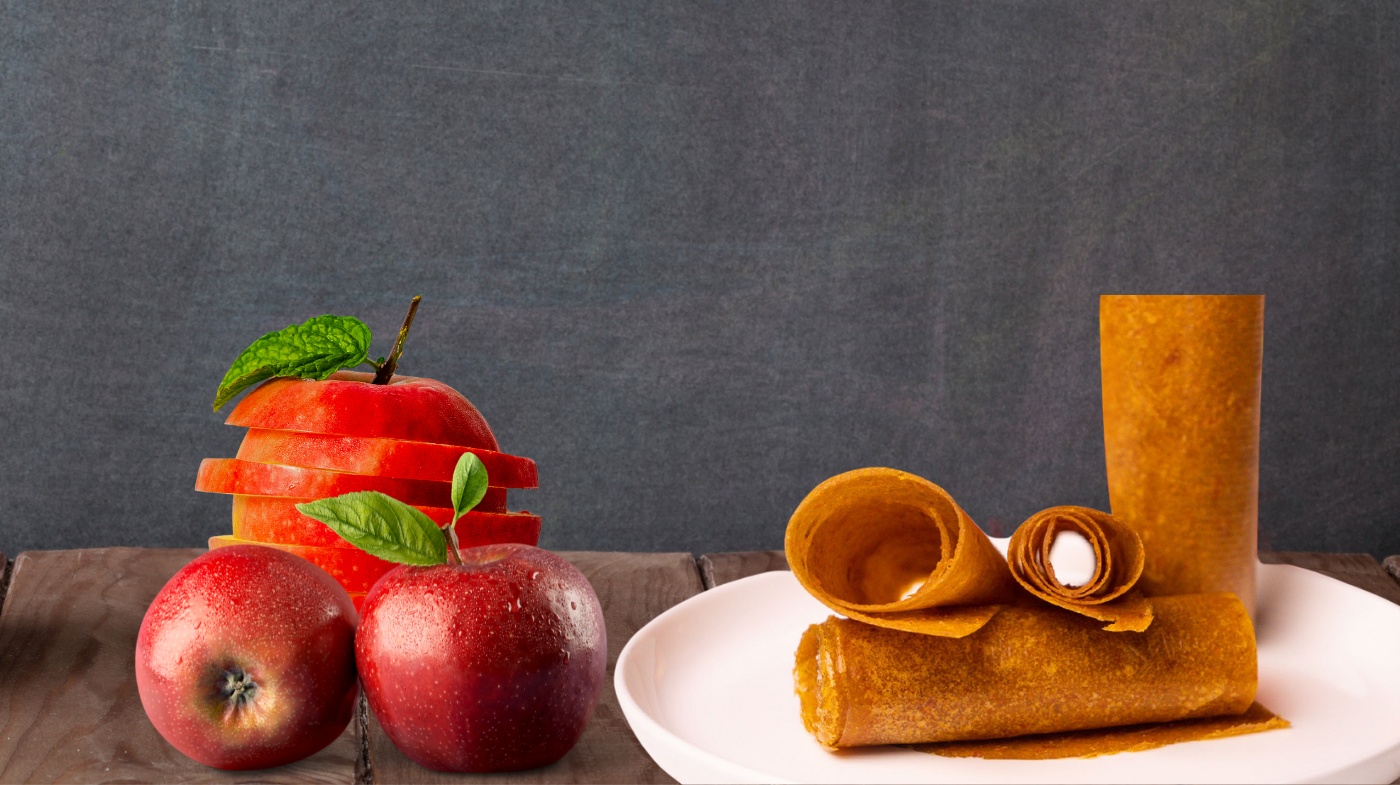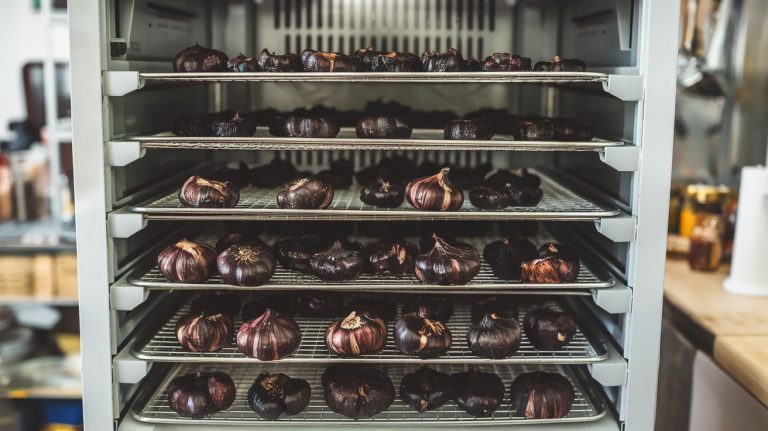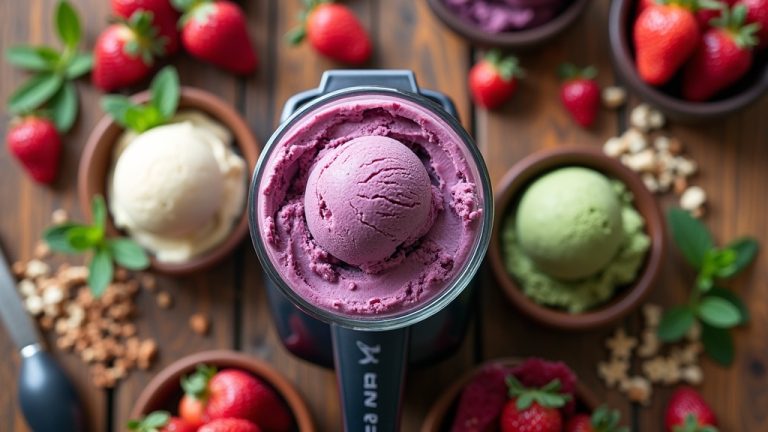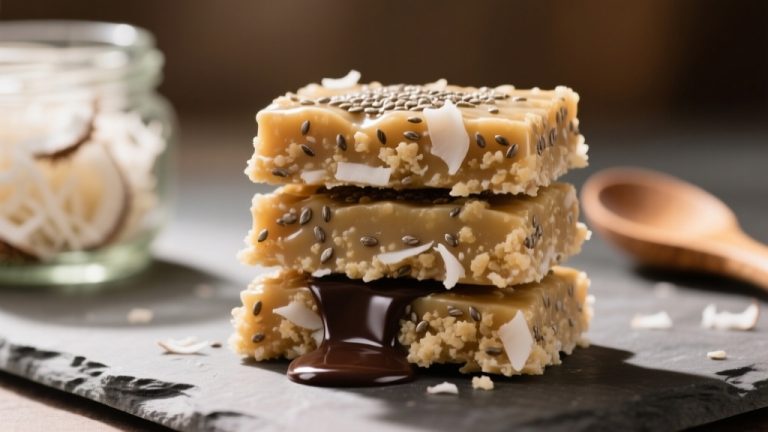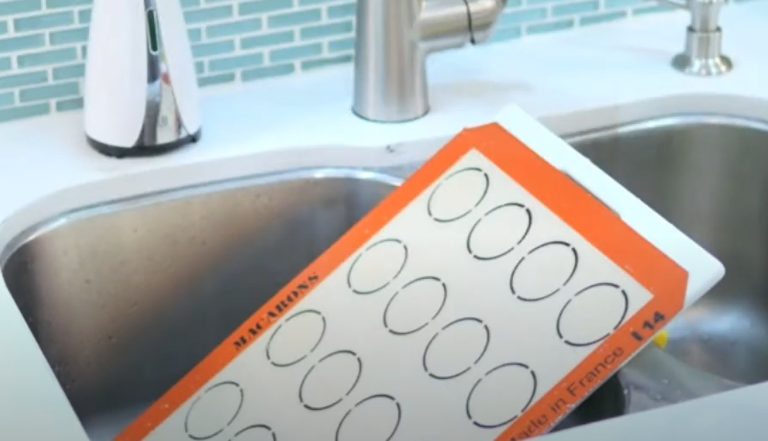How to Dehydrate Applesauce? A Simple Step-by-Step Guide
To dehydrate applesauce, start by choosing sweet apple varieties and simmering chopped apples until tender. Puree the cooked apples, then spread them 1/4 inch thick on lined baking sheets or dehydrator trays.
Set your dehydrator to 135°F, or your oven to its lowest setting, and dry for several hours until pliable. Store fruit leather in airtight containers in a cool, dark place, or vacuum seal it for longer preservation. Discover more tips and tricks for perfect results.
Key Takeaways
- Choose sweet apple varieties, like Gala or Fuji, and optionally add ingredients like sugar, lemon juice, or cinnamon for flavor enhancement.
- Peel, core, and chop apples into small pieces, then simmer in apple juice or water until tender before pureeing.
- For dehydrating, set the dehydrator at 135°F (57°C) and spread applesauce in a uniform thickness of 1/8 to 1/4 inch.
- Monitor the drying process, which can take 7 to 18 hours, ensuring applesauce is pliable and dry without sticky spots.
- Store the dehydrated applesauce in airtight containers in a cool, dark place, or vacuum seal for longer preservation.
Preparing Applesauce for Dehydration
When preparing applesauce for dehydration, it’s essential to start with the right ingredients to guarantee ideal flavor and texture.
Choose naturally sweet apple varieties like Red Delicious, Gala, Fuji, or McIntosh for the best results. Optionally, you can add sugar for sweetness, lemon juice to enhance flavor, and spices like cinnamon for additional taste.
Begin by peeling and coring the apples, then chop them into small pieces for faster cooking. Simmer the chopped apples in apple juice or water until tender.
Once cooked, puree the apples to achieve a smooth consistency. Remember to taste and adjust sweetness or spices as needed.
Additionally, soaking the apple slices in boiling water before cooking can help ensure they are tender and flavorful. Finally, make sure your tools are clean to prevent any contamination during preparation.
Dehydrator Settings
Setting the right parameters on your dehydrator is essential for achieving perfectly dried applesauce. You’ll want to set the temperature around 135°F (57°C) for ideal results.
Drying time generally falls between 7 to 18 hours, depending on your thickness and texture preferences. Aim for a layer thickness of 1/8 to 1/4 inch for even drying. Fruit leather should be pliable and easy to roll, which indicates that the drying process was successful.
| Parameter | Recommendation | Notes |
|---|---|---|
| Temperature | 135°F (57°C) | Guarantees even drying |
| Drying Time | 7 – 18 hours | Adjust based on thickness |
| Layer Thickness | 1/8 – 1/4 inch | Thicker layers take longer |
| Model Suggestions | Excalibur, Cosori | Both are effective for applesauce |
| Monitoring | Check for pliability | No sticky spots are ideal |
Oven Method for Dehydration
To effectively dehydrate applesauce using an oven, you’ll need to prepare your equipment and ingredients carefully.
Start by lining baking sheets with parchment paper or silicone liners to prevent sticking. Set your oven to its lowest temperature, ideally between 140°F and 175°F. Homemade fruit leather is a healthy and customizable snack that can be made using this method. It’s advisable to preheat the oven to ensure even drying and prevent damage to your dehydrator sheets.
Spread the applesauce to a uniform thickness of about 1/4 inch, ensuring the edges are slightly thicker. You can enhance the flavor by adding lemon juice or spices before dehydrating.
Monitor the drying process, which typically takes 4-5 hours, removing the leather when it’s pliable and dry to the touch.
Once cool, peel it off, cut into strips, and prepare for storage, ensuring it remains smooth and not tacky for best results.
Storing Fruit Leather
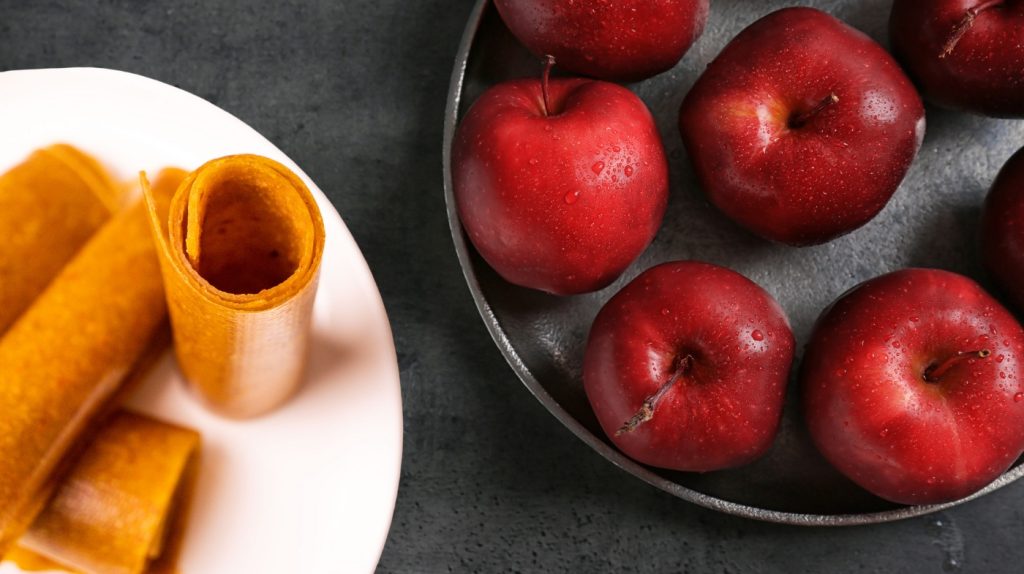
After successfully dehydrating your applesauce into fruit leather, proper storage is key to maintaining its flavor and texture.
To keep it fresh at room temperature, store it in a cool, dark place within airtight containers, avoiding any fruits that release moisture to prevent spoilage. Expect a shelf life of two to four weeks in this environment. Vacuum sealing is recommended for maintaining freshness during this time.
For longer preservation, freeze your fruit leather in moisture-proof bags or airtight containers, where it can last up to one year. Maintain a consistent freezer temperature for peak freshness.
Alternatively, vacuum sealing offers excellent long-term preservation; just check the seal tightness and store it in a cool, dark location.
Optional Ingredients and Variations
While you can make dehydrated applesauce simply by using the basic recipe, incorporating optional ingredients and variations can elevate the flavor and texture considerably.
For instance, adding lemon juice not only enhances flavor but also prevents browning. Sweeteners like honey or maple syrup provide a natural sweetness, while spices such as cinnamon or pumpkin pie spice add warmth and complexity.
Additionally, making homemade fruit leather from applesauce is an excellent way to utilize your dehydrated applesauce as a cost-effective snack option. You might also consider flavor variations like vanilla cinnamon or peach applesauce for an invigorating twist.
Textural enhancements can come from thickening with additional apples or using pectin for a firmer outcome. Finally, experimenting with spice combinations, like nutmeg and ginger, can yield unique flavors that cater to diverse tastes, making your dehydrated applesauce truly distinctive.
Frequently Asked Questions
Can I Dehydrate Applesauce Without a Dehydrator or Oven?
Yes, you can dehydrate applesauce without a dehydrator or oven. You can utilize methods like sun drying, car drying, or setting up drying racks in a warm, dry area.
Make sure to spread the applesauce evenly and thinly for quicker drying. Monitor the process closely to avoid over-drying or mold.
Proper storage in airtight containers will help maintain freshness once dried, ensuring a successful dehydration experience.
How Do I Know When the Applesauce Is Fully Dehydrated?
You’ll know your applesauce is fully dehydrated when it feels like a superhero’s cape—no longer sticky, just perfectly pliable.
Conduct a visual check for any wet spots that might suggest incomplete drying. The texture should be flexible and easy to roll without cracking.
If it’s too brittle, it’s gone too far. So, keep your eyes peeled and your hands ready to feel for that ideal, superhero-like consistency.
Can I Add Other Fruits to My Applesauce Mixture?
Yes, you can definitely add other fruits to your applesauce mixture. Blending fruits like peaches or berries with apples enhances both flavor and nutritional value. Aim for combinations such as apple-pear or apple-berry for a unique taste.
Just guarantee you blend the fruits thoroughly into the applesauce to achieve a uniform flavor. Keep in mind that thicker mixtures may need longer drying times, so spread them evenly for best results.
What Types of Apples Are Best for Making Applesauce?
When crafting applesauce, think of apples as musical notes; each variety contributes to a harmonious blend. Sweet apples like Gala or Honeycrisp bring melody, while tart options like Granny Smith add a sharp rhythm.
Softer apples, such as McIntosh, create a smooth texture, perfect for a velvety finish. Mixing these varieties allows you to achieve a balanced flavor profile, ensuring your applesauce sings with delightful complexity that’s both satisfying and delicious.
Is It Safe to Eat Dehydrated Applesauce After a Year?
Yes, it’s safe to eat dehydrated applesauce after a year, provided it’s stored correctly in airtight containers. While safety is maintained, the flavor and nutritional value might diminish over time.
Make sure you store it in a cool, dark place, ideally below 60°F, to maximize its longevity. If you’re unsure about its quality, inspect it for any off smells or signs of spoilage before consuming. Proper packaging is essential for extending its shelf life.
Preserve the Flavor: Enjoy Homemade Dehydrated Applesauce Anytime
By dehydrating applesauce, you’re not just preserving a delicious treat; you’re capturing the essence of fall in every bite. Whether you choose a dehydrator or an oven, the process is both simple and rewarding.
Store your fruit leather properly to extend its shelf life and consider experimenting with optional ingredients for unique flavors. So, why let your applesauce go to waste? Immerse yourself in the world of dehydration and enjoy your homemade snacks anytime you crave them.

